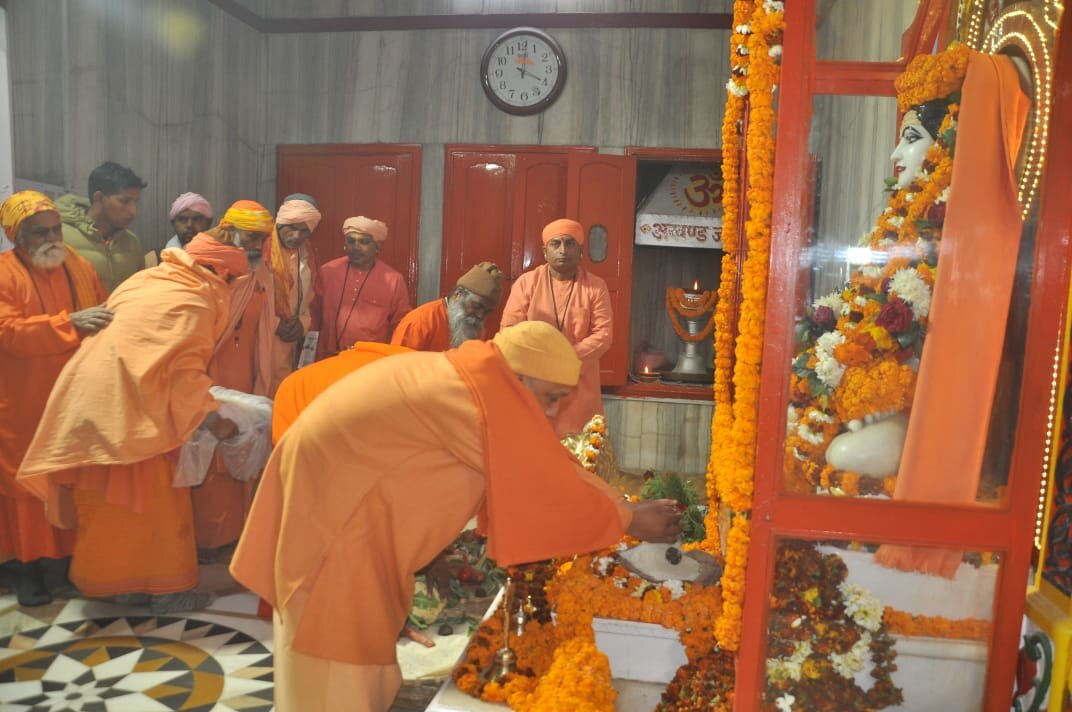Bahu Begum ka Maqbara

Bahu Begum Maqbara is the tomb of Begum Unmatuz Zohra Bano, the queen of Nawab Shuja-ud-Daula. The mausoleum is an outstanding example of Awadhi architectural style. The entire complex, full of greenery, is now a protected site under the Archaeological Survey of India (ASI) and is managed by the Shia Board Committee (Lucknow). It comes to life during Muharram.
One can witness a bird’s eye view of the city from the top of the complex which is said to be the tallest standing edifice in Ayodhya.
Bahu Begum ka Maqbara is the tomb of Queen Bride Begum Unmatuzzohra Bano alias Bahu Begum a memorial built for queen of Nawab Shuja-ud-Daula. Its one of the tallest buildings in Faizabad and is a notable example of non-Mughal Muslim architecture.
The Mausoleum of Bahu Begum is famous for the creative architectural brilliance with which it was designed and constructed. Shuja-ud-daula’s wife was the well known as Bahu Begum, who married the Nawab in 1743 and continued to reside in Faizabad, her residence being the Moti-Mahal. Close by at Jawaharbagh lies her Maqbara, where she was buried after her death in 1816. It is considered to be one of the finest buildings of its kind in Avadh, which was built at the cost of three lakh rupees by her chief advisor Darab Ali Khan. A fine view of the city is obtainable from top of the begum’s tomb. Bahu Begum was a woman of great distinction and rank, bearing dignity. Most of the Muslim buildings of Faizabad are attributed to her. From the date of Bahu Begum’s death in 1815 till the annexation of Avadh, the city of Faizabad gradually fell into decay. The glory of Faizabad finally eclipsed with the shifting of capital from Faizabad to Lucknow by Nawab Asaf-ud-Daula.
Excerpts from the website www.columbia.edu
“Bahu Begum” (H.H. Nawab ‘Umat uz-Zohra Begum Sahiba) was the widow of the third Nawab of Avadh or Oudh, Shuja-ud-Daula (H.H. Shuja ud-Daula, Nawab Mirza Jalal ud-din Haidar Khan Bahadur, Nawab Wazir of Oudh, r. 1754-75). Her maqbara, “the finest building of the kind in Oudh” (Carnegy, Woodburn & Noble 1870: 26) was not completed before 1858. This date is important since Umrao Jan expressively mentions that her father worked there as “jamadar”. In “A Historical Sketch of Tahsil Fyzabad, Zillah Fyzabad, including Parganas Haveli Oudh and Pachhimrath, with the old Capitals Ajudhia and Fyzabad, Pargana Mangalsi and Pargana Amsin” (Lucknow 1870), the account on this monument is as follows: “The Bahu Begam’s Mausoleum. It was arranged by treaty between the British Government, the Bahu Begam, and the Nawáb of Oudh, that 3 lacs of sicca Rs. of her riches, were to be set apart for the erection by her confidential servant Daráb Alí Khán, of her tomb, and that the revenue of the villages to the aggregate amount of sicca Rs. 10,000 per annum, were to be assigned for its support. The Begam died on the 27th of January 1816. Daráb Alí laid the foundations and built the plinth, when he also died, on the 10th of August 1818. Panáh Alí, vakíl, and Mirzá Haider, the son of an adopted daughter, then carried on the work through a series of years when, with the completion of the brick work, the grant of 3 lacs came to an end, and the beautiful edifice remained unfinished till after the mutiny of 1857.”





